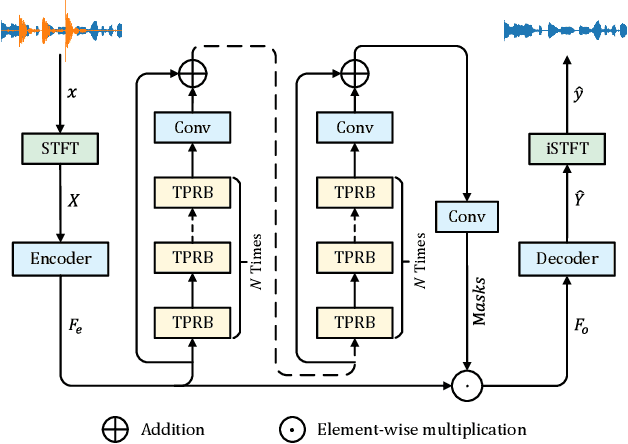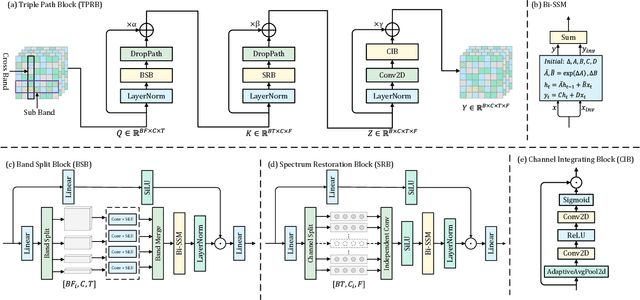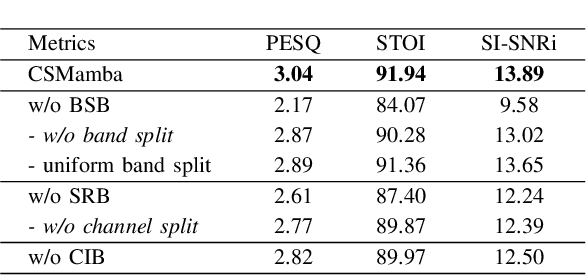Yiqun Zhang
Beyond GPT-5: Making LLMs Cheaper and Better via Performance-Efficiency Optimized Routing
Aug 18, 2025Abstract:Balancing performance and efficiency is a central challenge in large language model (LLM) advancement. GPT-5 addresses this with test-time routing, dynamically assigning queries to either an efficient or a high-capacity model during inference. In this work, we present Avengers-Pro, a test-time routing framework that ensembles LLMs of varying capacities and efficiencies, providing a unified solution for all performance-efficiency tradeoffs. The Avengers-Pro embeds and clusters incoming queries, then routes each to the most suitable model based on a performance-efficiency score. Across 6 challenging benchmarks and 8 leading models -- including GPT-5-medium, Gemini-2.5-pro, and Claude-opus-4.1 -- Avengers-Pro achieves state-of-the-art results: by varying a performance-efficiency trade-off parameter, it can surpass the strongest single model (GPT-5-medium) by +7% in average accuracy. Moreover, it can match the average accuracy of the strongest single model at 27% lower cost, and reach ~90% of that performance at 63% lower cost. Last but not least, it achieves a Pareto frontier, consistently yielding the highest accuracy for any given cost, and the lowest cost for any given accuracy, among all single models. Code is available at https://github.com/ZhangYiqun018/AvengersPro.
Your Attention Matters: to Improve Model Robustness to Noise and Spurious Correlations
Jul 28, 2025Abstract:Self-attention mechanisms are foundational to Transformer architectures, supporting their impressive success in a wide range of tasks. While there are many self-attention variants, their robustness to noise and spurious correlations has not been well studied. This study evaluates Softmax, Sigmoid, Linear, Doubly Stochastic, and Cosine attention within Vision Transformers under different data corruption scenarios. Through testing across the CIFAR-10, CIFAR-100, and Imagenette datasets, we show that Doubly Stochastic attention is the most robust. Our findings inform self-attention selection in contexts with imperfect data.
Why Do More Experts Fail? A Theoretical Analysis of Model Merging
May 27, 2025Abstract:Model merging dramatically reduces storage and computational resources by combining multiple expert models into a single multi-task model. Although recent model merging methods have shown promising results, they struggle to maintain performance gains as the number of merged models increases. In this paper, we investigate the key obstacles that limit the scalability of model merging when integrating a large number of expert models. First, we prove that there is an upper bound on model merging. Further theoretical analysis reveals that the limited effective parameter space imposes a strict constraint on the number of models that can be successfully merged. Gaussian Width shows that the marginal benefit of merging additional models diminishes according to a strictly concave function. This implies that the effective parameter space becomes rapidly saturated as the number of merged models increases. Furthermore, using Approximate Kinematics Theory, we prove the existence of a unique optimal threshold beyond which adding more models does not yield significant performance improvements. At the same time, we introduce a straightforward Reparameterized Heavy-Tailed method (RHT) to extend the coverage of the merged model, thereby enhancing its performance. Empirical results on 12 benchmarks, including both knowledge-intensive and general-purpose tasks, validate our theoretical analysis. We believe that these results spark further research beyond the current scope of model merging. The source code is in the anonymous Github repository https://github.com/wzj1718/ModelMergingAnalysis.
The Avengers: A Simple Recipe for Uniting Smaller Language Models to Challenge Proprietary Giants
May 26, 2025Abstract:As proprietary giants increasingly dominate the race for ever-larger language models, a pressing question arises for the open-source community: can smaller models remain competitive across a broad range of tasks? In this paper, we present the Avengers--a simple recipe that effectively leverages the collective intelligence of open-source, smaller language models. Our framework is built upon four lightweight operations: (i) embedding: encode queries using a text embedding model; (ii) clustering: group queries based on their semantic similarity; (iii) scoring: scores each model's performance within each cluster; and (iv) voting: improve outputs via repeated sampling and voting. At inference time, each query is embedded and assigned to its nearest cluster. The top-performing model(s) within that cluster are selected to generate the response using the Self-Consistency or its multi-model variant. Remarkably, with 10 open-source models (~7B parameters each), the Avengers collectively outperforms GPT-4.1 on 10 out of 15 datasets (spanning mathematics, code, logic, knowledge, and affective tasks). In particular, it surpasses GPT-4.1 on mathematics tasks by 18.21% and on code tasks by 7.46%. Furthermore, the Avengers delivers superior out-of-distribution generalization, and remains robust across various embedding models, clustering algorithms, ensemble strategies, and values of its sole parameter--the number of clusters. We have open-sourced the code on GitHub: https://github.com/ZhangYiqun018/Avengers
FATE: A Prompt-Tuning-Based Semi-Supervised Learning Framework for Extremely Limited Labeled Data
Apr 14, 2025Abstract:Semi-supervised learning (SSL) has achieved significant progress by leveraging both labeled data and unlabeled data. Existing SSL methods overlook a common real-world scenario when labeled data is extremely scarce, potentially as limited as a single labeled sample in the dataset. General SSL approaches struggle to train effectively from scratch under such constraints, while methods utilizing pre-trained models often fail to find an optimal balance between leveraging limited labeled data and abundant unlabeled data. To address this challenge, we propose Firstly Adapt, Then catEgorize (FATE), a novel SSL framework tailored for scenarios with extremely limited labeled data. At its core, the two-stage prompt tuning paradigm FATE exploits unlabeled data to compensate for scarce supervision signals, then transfers to downstream tasks. Concretely, FATE first adapts a pre-trained model to the feature distribution of downstream data using volumes of unlabeled samples in an unsupervised manner. It then applies an SSL method specifically designed for pre-trained models to complete the final classification task. FATE is designed to be compatible with both vision and vision-language pre-trained models. Extensive experiments demonstrate that FATE effectively mitigates challenges arising from the scarcity of labeled samples in SSL, achieving an average performance improvement of 33.74% across seven benchmarks compared to state-of-the-art SSL methods. Code is available at https://anonymous.4open.science/r/Semi-supervised-learning-BA72.
Mind the Gap: Confidence Discrepancy Can Guide Federated Semi-Supervised Learning Across Pseudo-Mismatch
Mar 17, 2025Abstract:Federated Semi-Supervised Learning (FSSL) aims to leverage unlabeled data across clients with limited labeled data to train a global model with strong generalization ability. Most FSSL methods rely on consistency regularization with pseudo-labels, converting predictions from local or global models into hard pseudo-labels as supervisory signals. However, we discover that the quality of pseudo-label is largely deteriorated by data heterogeneity, an intrinsic facet of federated learning. In this paper, we study the problem of FSSL in-depth and show that (1) heterogeneity exacerbates pseudo-label mismatches, further degrading model performance and convergence, and (2) local and global models' predictive tendencies diverge as heterogeneity increases. Motivated by these findings, we propose a simple and effective method called Semi-supervised Aggregation for Globally-Enhanced Ensemble (SAGE), that can flexibly correct pseudo-labels based on confidence discrepancies. This strategy effectively mitigates performance degradation caused by incorrect pseudo-labels and enhances consensus between local and global models. Experimental results demonstrate that SAGE outperforms existing FSSL methods in both performance and convergence. Our code is available at https://github.com/Jay-Codeman/SAGE
Classifying Long-tailed and Label-noise Data via Disentangling and Unlearning
Mar 14, 2025Abstract:In real-world datasets, the challenges of long-tailed distributions and noisy labels often coexist, posing obstacles to the model training and performance. Existing studies on long-tailed noisy label learning (LTNLL) typically assume that the generation of noisy labels is independent of the long-tailed distribution, which may not be true from a practical perspective. In real-world situaiton, we observe that the tail class samples are more likely to be mislabeled as head, exacerbating the original degree of imbalance. We call this phenomenon as ``tail-to-head (T2H)'' noise. T2H noise severely degrades model performance by polluting the head classes and forcing the model to learn the tail samples as head. To address this challenge, we investigate the dynamic misleading process of the nosiy labels and propose a novel method called Disentangling and Unlearning for Long-tailed and Label-noisy data (DULL). It first employs the Inner-Feature Disentangling (IFD) to disentangle feature internally. Based on this, the Inner-Feature Partial Unlearning (IFPU) is then applied to weaken and unlearn incorrect feature regions correlated to wrong classes. This method prevents the model from being misled by noisy labels, enhancing the model's robustness against noise. To provide a controlled experimental environment, we further propose a new noise addition algorithm to simulate T2H noise. Extensive experiments on both simulated and real-world datasets demonstrate the effectiveness of our proposed method.
Iterative Prompt Relocation for Distribution-Adaptive Visual Prompt Tuning
Mar 10, 2025Abstract:Visual prompt tuning (VPT) provides an efficient and effective solution for adapting pre-trained models to various downstream tasks by incorporating learnable prompts. However, most prior art indiscriminately applies a fixed prompt distribution across different tasks, neglecting the importance of each block differing depending on the task. In this paper, we investigate adaptive distribution optimization (ADO) by addressing two key questions: (1) How to appropriately and formally define ADO, and (2) How to design an adaptive distribution strategy guided by this definition? Through in-depth analysis, we provide an affirmative answer that properly adjusting the distribution significantly improves VPT performance, and further uncover a key insight that a nested relationship exists between ADO and VPT. Based on these findings, we propose a new VPT framework, termed PRO-VPT (iterative Prompt RelOcation-based VPT), which adaptively adjusts the distribution building upon a nested optimization formulation. Specifically, we develop a prompt relocation strategy for ADO derived from this formulation, comprising two optimization steps: identifying and pruning idle prompts, followed by determining the optimal blocks for their relocation. By iteratively performing prompt relocation and VPT, our proposal adaptively learns the optimal prompt distribution, thereby unlocking the full potential of VPT. Extensive experiments demonstrate that our proposal significantly outperforms state-of-the-art VPT methods, e.g., PRO-VPT surpasses VPT by 1.6% average accuracy, leading prompt-based methods to state-of-the-art performance on the VTAB-1k benchmark. The code is available at https://github.com/ckshang/PRO-VPT.
Nature-Inspired Population-Based Evolution of Large Language Models
Mar 03, 2025



Abstract:Evolution, the engine behind the survival and growth of life on Earth, operates through the population-based process of reproduction. Inspired by this principle, this paper formally defines a newly emerging problem -- the population-based evolution of large language models (LLMs) -- and introduces a novel framework. Starting with a population of parent LLMs, our framework enables the population to evolve through four key operations: (i) crossover, merging the weights of different parents to create offspring LLMs, (ii) mutation, introducing small, random changes to model weights to foster diversity, (iii) selection, prioritizing high-performing models, and (iv) succession, transferring the learned experience from parent to offspring LLMs. With only 200 samples per new task, the LLM population evolves rapidly to adapt to the task at hand, without any gradients. Experiments on 12 datasets show that our framework consistently outperforms existing multi-LLM merging and adaptation methods, achieving accuracy gains of up to 54.8% over the best LLM in the initial population. Moreover, our framework allows for the evolution of LLMs across multiple new tasks simultaneously, scaling effectively with populations of up to 40 LLMs, and even zero-shot generalization to unseen held-out tasks. We have open-sourced the code on GitHub and released the weights of 10 parent LLMs, fine-tuned from gemma-2-2b-it, on HuggingFace$, enabling reproduction of our proposed framework using just a single 4090 GPU with 24GB memory, without any performance degradation.
Improving Speech Enhancement by Cross- and Sub-band Processing with State Space Model
Feb 22, 2025



Abstract:Recently, the state space model (SSM) represented by Mamba has shown remarkable performance in long-term sequence modeling tasks, including speech enhancement. However, due to substantial differences in sub-band features, applying the same SSM to all sub-bands limits its inference capability. Additionally, when processing each time frame of the time-frequency representation, the SSM may forget certain high-frequency information of low energy, making the restoration of structure in the high-frequency bands challenging. For this reason, we propose Cross- and Sub-band Mamba (CSMamba). To assist the SSM in handling different sub-band features flexibly, we propose a band split block that splits the full-band into four sub-bands with different widths based on their information similarity. We then allocate independent weights to each sub-band, thereby reducing the inference burden on the SSM. Furthermore, to mitigate the forgetting of low-energy information in the high-frequency bands by the SSM, we introduce a spectrum restoration block that enhances the representation of the cross-band features from multiple perspectives. Experimental results on the DNS Challenge 2021 dataset demonstrate that CSMamba outperforms several state-of-the-art (SOTA) speech enhancement methods in three objective evaluation metrics with fewer parameters.
 Add to Chrome
Add to Chrome Add to Firefox
Add to Firefox Add to Edge
Add to Edge